Wednesday Walk: K-Mart Kimchi
Time machining it to retail past, the science behind the spice, and vintage denim jackets
Welcome to Willoughby Hills!
If you enjoy what you’re reading, please consider a free subscribtion to receive emails every Wednesday and Sunday plus podcast episodes every two weeks. There are also paid options, which unlock even more features.
As is typical every Wednesday, today I’m bring you a smattering of topics that I hope will make you a bit more curious about the world around you and give you something to think about later. I call these Wednesday Walks, as it’s the type of conversation we might have walking down a path in the woods. Shall we take a stroll?
Of Note…
Before we dive into today’s issue, I wanted to share that Substack, the platform I use to publish Willoughby Hills and host the podcast, just launched a new feature called Notes. It’s a place for posting short notes, sharing interesting blurbs, and connecting with other readers and writers. If you’re subscribed to Willoughby Hills, you’re already following me on Notes!
I started experimenting with Notes yesterday and am already a fan! I’m imagining using it to post some of the inspiration behind my writing in real time (photographs from field trips, etc), sharing quick updates, and connecting you to some of my favorite writers and publications on Substack. Here’s my first Note from yesterday:
How to join
Head to substack.com/notes or find the “Notes” tab in the Substack app. As a subscriber to Willoughby Hills, you’ll automatically see my notes. Feel free to like, reply, or share them around!
You can also share notes of your own. I hope this becomes a space where every reader of Willoughby Hills can share thoughts, ideas, and interesting quotes.
And if you look today, there’s even a special upgrade offer only available through Notes… 👀
Getting Back to the Farm
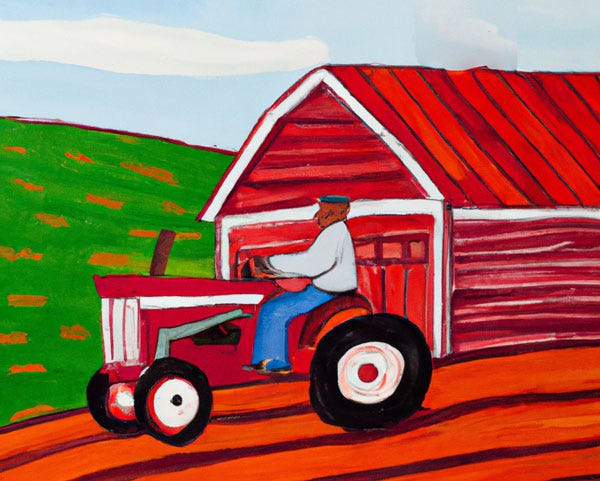
Last week marked the return of my beloved CSA at Clark Farm in Carlisle, MA. CSA stands for Community Supported Agriculture and I think of it a bit like buying stock in a farm.
We pay a fixed cost at the beginning of the season, and in exchange, are entitled to a share of fruit and vegetables from the farm each week through the growing season. When yields are high, CSA members get to share in that bounty, but there’s always the possibility that a drought or pest infestation could wipe out everything.
This week’s share included a lot of storage crops that were harvested last fall but still looked freshly picked, including red onion, beets, carrots, and cabbage.
Perhaps the most exciting surprise though was a jar of kimchi, which was made using a combination of vegetables from Clark Farm and a few other area farms.
If you haven’t had the pleasure of tasting it, kimchi is a spicy fermented cabbage originally from Korea. It’s very similar to sauerkraut and has many of the same probiotic health benefits. (And, if you don’t already know, I’m a big sauerkraut fan!)
I have dabbled in kimchi making a few times, fermenting it in glass mason jars. But traditionally, Korean families made kimchi in earthenware containers known as “onggi.” Onggi are said to date back more than 6,000 years.
I was excited to stumble upon a story in The Washington Post by Carolyn Y. Johnson, which looked at the health benefits of making kimchi in onggi. According to Johnson, Georgia Institute of Technology’s Soohwan Kim and David Hu understood that kimchi made in onggi was higher in good bacteria, but they sought to understand why:
“Kim grew up on South Korea’s Jeju-do, a volcanic island where onggi are still crafted today. He traveled back home to do much of the research, buying an onggi. He used a scanning electron microscope and a CT scan to zoom in and measure the pores. Those measurements allowed Kim and Hu to construct models to understand the complex fluid mechanics that transpire to make kimchi.”
Kim and Hu’s study revealed that onggi did indeed produce higher lactic acid bacteria and antioxidants, but that the vessel didn’t affect the taste much.
For me, it was a reminder that our ancestors seemed to possess some innate knowledge as to the “right” way to do things, even if they didn’t fully understand the science behind those methods. We sometimes scoff at the old ways, forgetting that they worked for thousands of years (at least in this case) before us.
I’ve also been thinking about the beauty of handmade earthenware since my visit to Old Sturbridge Village a few weeks ago. There is something beautiful about molding clay from the earth into a useful vessel, using only your hands and a spinning platform.
Big K
Recently, I wrote a piece about ways to improve suburbia for pedestrians and bikers, which was a reaction to
's writing about the redevelopment of an old Kmart in Virginia.I must have allowed too many cookies on my browser, because soon after reading Addison’s piece and writing mine, YouTube served me this video of a K-Mart store in 1992:
It’s a seven minute video and I found myself glued to the entire thing, even though nothing really happens. If you want to be transported back to 1992, it’s worth a watch.
The opening frame, a wide shot taken from the back of the parking lot, the giant “K mart” letters towering overhead, and the coin-operated merry go round spinning, would be at least one version of how I’d like to be greeted when I enter the after life. (The other would be with large green letters reassuring me that “everything is fine,” although I did watch a lot of The Good Place during the pandemic…)
There were a few interesting observations that I had from watching the K-Mart video. For one thing, it’s remarkable how much cash was changing hands back then. I became an adult just as credit cards were becoming the preferred way to pay, although I still handled plenty of cash as a cashier in my teenage years. These days, I tap my phone for most purchases. There’s even somebody in the video writing a check!
It was also interesting to look at the racial and gender politics on view in just this one short video. All of the cashiers are women, some white, some black. They are all wearing red bib aprons. The only man seen in the checkout area is a white male manager, dressed in a full suit. There also appears to be a female manager (or maybe lead cashier) who is making announcements on the PA system, although she is also dressed in a red bib.
I was especially intrigued by the end portion of the video, watching a man attempting to buy a television. It’s hard to hear the entire conversation, but from what I gather, he’s asking about buying a TV to send overseas, but is concerned about it working. The clerk points out that he may need an adapter since most countries use 240 volts for electrical service but the U.S. uses 120 volts.
The customer explains that he’s not worried about the power, but more about the TV signal working. I interpreted this as asking if UHF and VHF frequencies (which is how TV channels were delivered over the air prior to the early 2000s) were compatible, but Tim on Twitter pointed out to me that this could be a discussion of NTSC vs PAL.
At any rate, it’s kind of crazy to imagine a time when the internet didn’t exist, or at least wasn't as readily accessible. To get an answer to a question like this, you simply went to your local K-Mart and asked the clerk. Who else were you supposed to ask?
A lot of the commenters on YouTube noted that watching videos like this was a bit like time travel. And that’s true!
I wasn’t a big K-Mart shopper, although I did recently come across a photo I took in 2013 of a vintage K-Mart sign along the side of Route 66 in Albuquerque, New Mexico. I guess I had some nostalgia for the chain even before its demise.
#NoNewClothes- Week 26
This week marks an important milestone, as I am now officially half way through my challenge of going an entire year without buying any new clothes. If you’ve been following along, you know that this was inspired by an interview I conducted with Amory Sivertson, who undertook a similar journey last year.
Sometimes life changes like this are incredibly difficult, but for me, it’s really just taken some refocusing to realize that there’s not much that I need that I don’t already have.
There were no official rules for this, and nobody to hold me to account except myself (and I suppose all of you). I think vintage articles or used clothes would be acceptable, although I’ve six months without buying any clothes!
I have to admit that I felt some pangs of nostalgia and consumerism (but also felt really old) when I stopped at the Connecticut Historical Society Museum and Library recently and saw a display that included a denim Planet Hollywood jacket from the 1990s.
I was a big Planet Hollywood fan back in the day. I even came across a photo of me wearing a Planet Hollywood turtle neck, overalls, and a Cleveland Cavs Starter(esque) jacket at around age 11.
I started searching eBay for the PH denim jacket on display at the museum and found that it’s still quite available. But I quickly ran into a problem when attempting to buy vintage clothes online without a fitting room: how does sizing from 30 years ago even work? I’m somewhere between a Small and a Medium in 2023 sizing, but I’ve often fit into everything from a children’s Large to a a men’s Large in vintage fashion.
There’s also, not surprisingly, quite a price range on eBay. There’s seriously one listed for $144.95, plus $11.19 for economy shipping, although $20 to $30 seems to be the going rate. There’s the question of which city I want to represent: am I more Costa Mesa or Beverly Hills?
In the end, as I wrote about when trying to buy a dishwasher, having too many options made making a decision impossible. Had I stumbled upon a single Planet Hollywood denim jacket at a vintage store, there’s a high probability that I would buy regardless of the city listed on it or the cost (within reason). But trying to decide between spending $28.99 or $29.99 meant that I didn’t buy anything.
Which is good news for my wallet and it means that the No New Clothes challenge extends for another week. It’s a small victory, but one I will take!
But sadly, it means I won’t be mistaken for a 1990s Drew Barrymore anytime soon.
Thank you for reading! Did you get something out of today’s issue? I always love hearing your thoughts, so please drop a line in the comments.
I publish new issues every Wednesday and Sunday. Sign up to always receive the latest issue and support my work:
Other Wednesday Walks
Please consider sharing this with a friend that you think might enjoy it or you can post it on social media.
If you’ve missed past issues of this newsletter, they are available to read here.
Stay Safe!
Heath





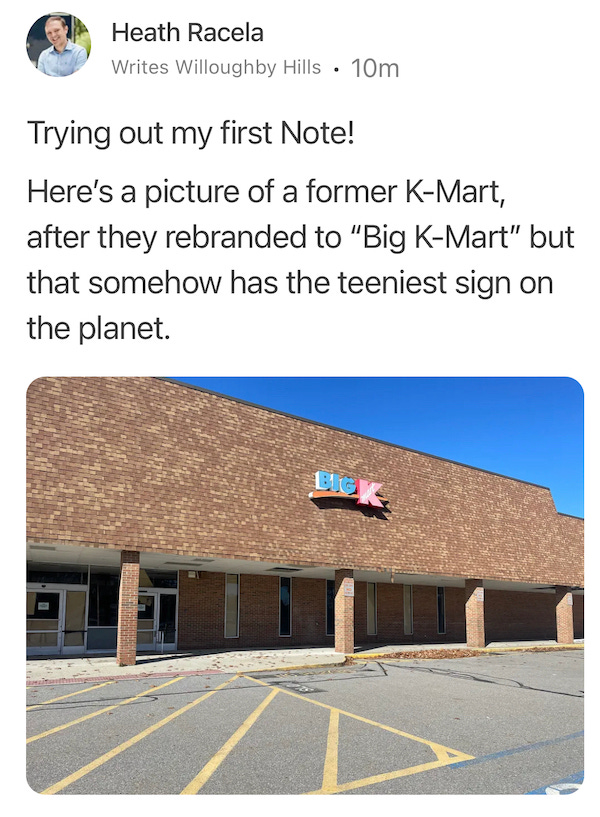

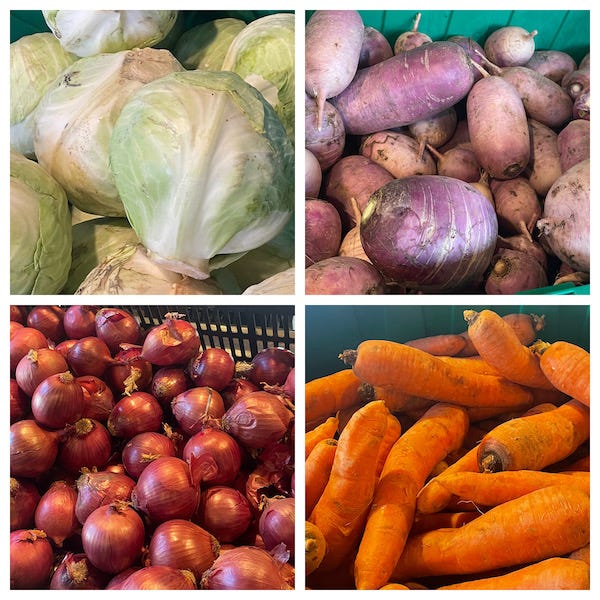
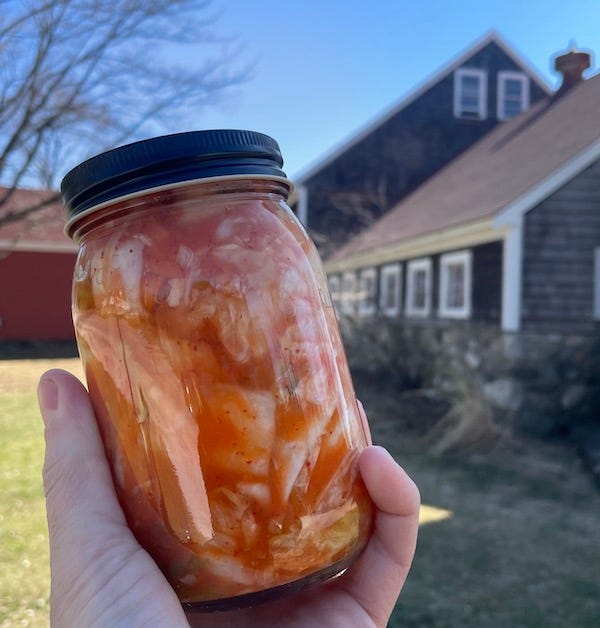
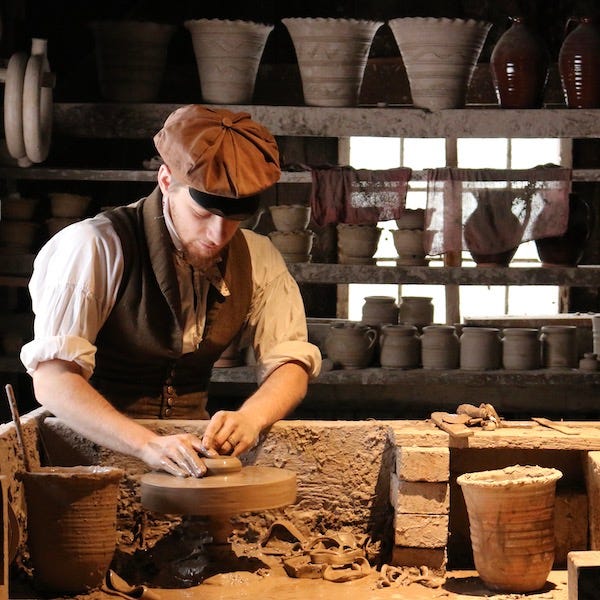

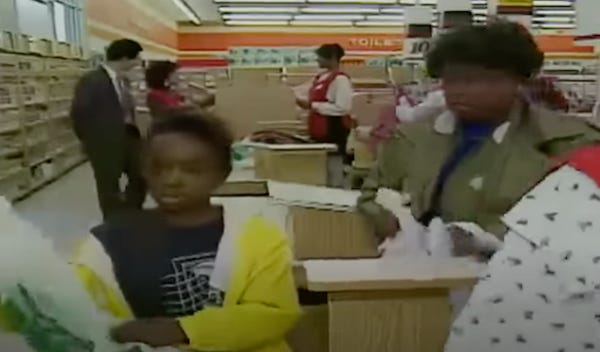
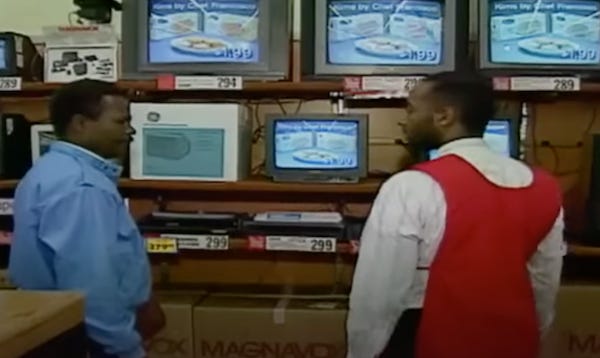
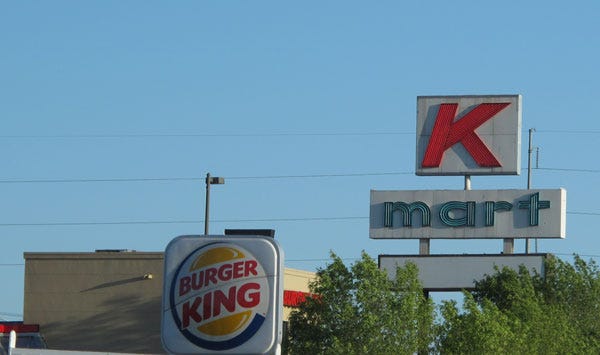
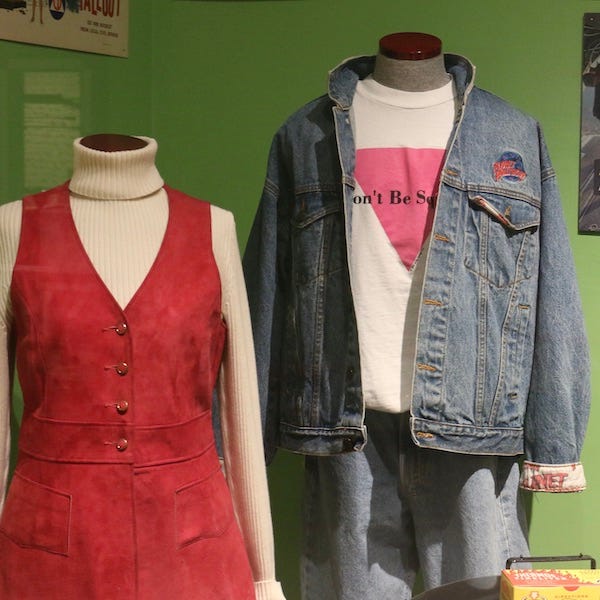
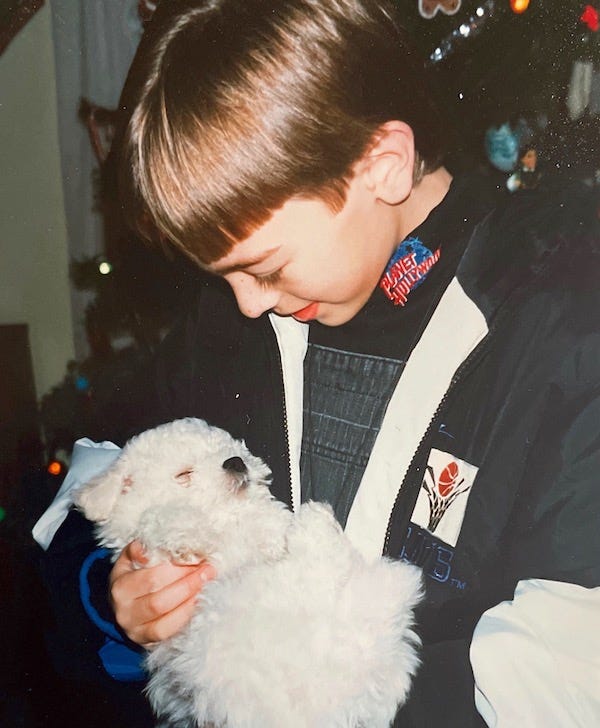

My aunt would have been one of those red aproned Black women if you'd walked into the local K-mart that looked like this one in Greensboro in 1992. I also remember that the new design of K-mart premiered the next year and it was a big deal for that particular part of town, near 2/3 of my childhood homes, to get something brand-new. Now, almost the whole center is vacant save a cafeteria chain (s/o to our homegrown K&W) and that building has been several schools. The grocery part has been vacant almost 10, if not 15 years at this point.
Meanwhile, here in Oxon Hill, I shop at a Target that was converted from one of Maryland's last K-marts in 2019!